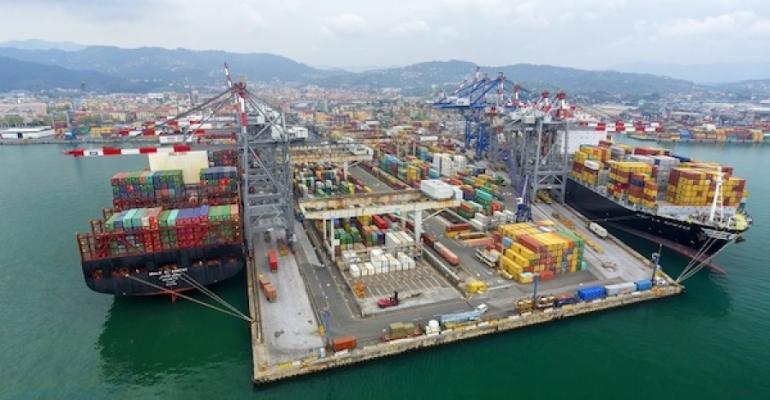Key among the factors affecting the flow of container volumes via northern and southern European gateways are price and connectivity, they suggested. Dynamar senior shipping consultant and managing editor Dirk Visser noted that while northern European ports had the advantage in connectivity with some 250 rail shuttle services going via Rotterdam per week, current spot rates via southern European ports are about $60 per teu cheaper.
Ocean Shipping Consultants project director Jolke Helbing meanwhile pointed out that the European Commission’s Trans-European Transport Network (TEN-T) project that aims to implement and develop a Europe-wide transportation network will help significantly in improving south to north Europe links where inland road and rail infrastructure is still lagging.
“If you look at the TEN-T corridor development I do believe that’s an important driver and will also impact the future competition between the different port regions,” said Helbing.
He also said there was a lot of potential for development with China’s Belt and Road Initiative (BRI). “It’s a development where we see a lot of investments being made by China in both operators, infrastructure and financial companies and for Europe and the southern gateways I think that will have an impact,” Helbing added.
While acknowledging that northern Europe would continue to be the predominant destination market in GDP terms, Helbing also pointed out that intermodal frequencies from the south have been improving steadily.
For example he said some surveys have shown that the number of trains from the Adriatic ports of Koper and Trieste is increasing faster than that from Hamburg and Rotterdam. Between 2008 and 2017 in terms of shipments to Austria, Slovakia, Czech, Hungary, Switzerland and southern Germany, the port of Trieste’s market share rose from 8% to 25%.
Helbing noted that while the market size was still relatively small at about 3m teu a year, it had potential and some lines such as MSC have a clear strategy to focus on the Adriatic as a main gateway. “So are there opportunities, yes, and I think there are already people who are utilising it,” he said.
The operators of the ports of Koper and Ningbo recently signed a cooperation agreement to increase trade between China and central and eastern Europe. Meanwhile in Piraeus inland connectivity does not really exist yet, but it could be a future BRI project, Helbing suggested. And for the Ligurian ports, the TEN-T developments will be key to improving connectivity in future.
As a further example, Helbing suggested that in a potential scenario, Ocean Shipping Consultants found that based on just inland costs, there is a natural hinterland for the two regions’ ports that favours the north with a roughly 60% share. However, with the completion of the TEN-T north and south corridor, the reach of the southern ports goes further north, he said and extending further, if the actual costs are reduced by 150 euros per feu it was found that the south’s market share could actually exceed 50%.
He also pointed to China’s BRI investments as another key factor. “If you look at a holistic picture of north versus south then the BRI and its total global investments are a very serious development… Specifically in terms of the Mediterranean they have invested in Turkey and Greece and also in the western Mediterranean,” said Helbing.
“It’s a wider infrastructure initiative and I think it would do well to take care and be aware of what their strategies are and potentially engage in discussions on how that could benefit the different gateways,” he concluded.
Copyright © 2024. All rights reserved. Seatrade, a trading name of Informa Markets (UK) Limited.
Add Seatrade Maritime News to your Google News feed.  |


